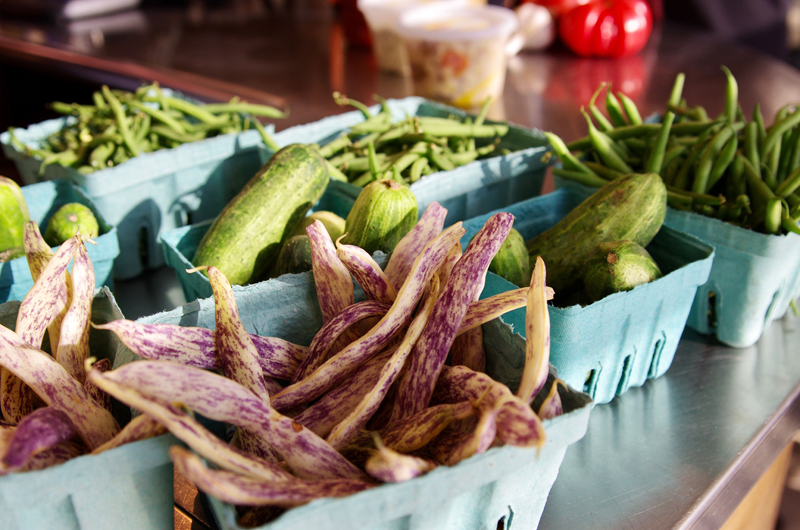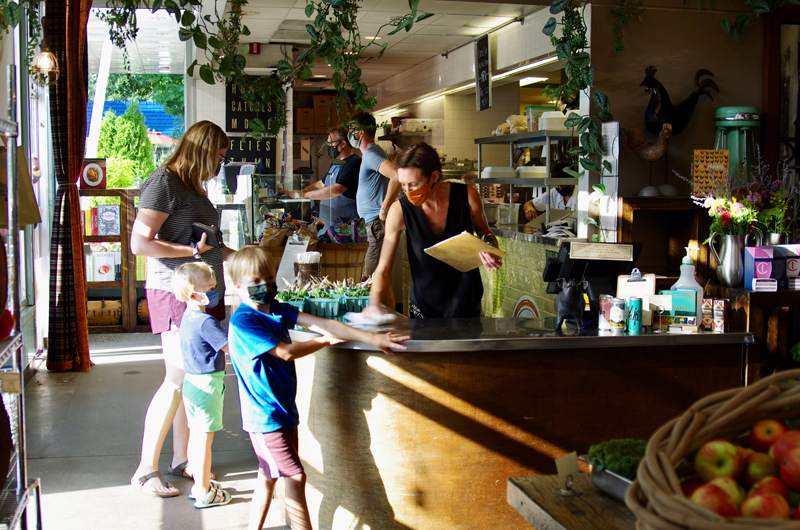
PHOTOS BY BRENDA JOHNSON
Restaurants in the age of COVID-19 are scrambling to adapt to an inhospitable environment. With indoor seating limited and the threat of cooler weather ahead, it’s a challenging time to be a restaurateur.
Perhaps uniquely positioned to pivot under these strange circumstances is south Minneapolis farm-to-fork eatery Wise Acre. Since opening over a decade ago, the restaurant has been operating on a nearly closed-loop system—they are an eatery and a farm, which means they grow most of their ingredients themselves rather than sourcing from multiple local producers. The first (and perhaps only) restaurant in the area to take this one-farm-to-one-dining-room approach, Wise Acre is hoping to leverage their model to survive the pandemic, the related economic collapse, and food supply chain disruptions that have multiplied pain in the food service sector.
“It really came down to what do you have for assets or what do you do well,” says general manager Jimmy Layer. For Wise Acre, all roads lead to, well, their farm.
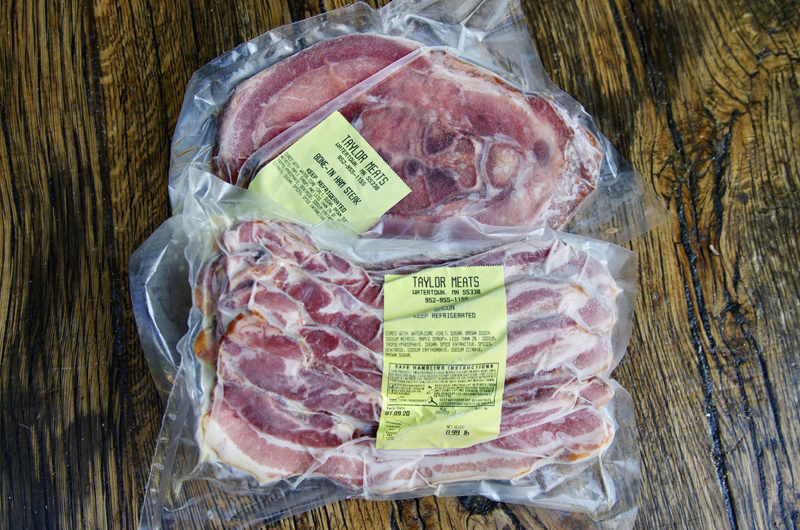 As social distancing regulations and mask mandates were put in place, the team looked at their menu and assets strategically. The result is an array of offerings optimized for curbside pickup and a smorgasbord of retail items brought in straight from the farm. These include ham steaks, whole Pekin ducks, kohlrabi, garlic scapes, and oyster mushrooms. (Layer notes that these offerings change seasonally and with availability.)
As social distancing regulations and mask mandates were put in place, the team looked at their menu and assets strategically. The result is an array of offerings optimized for curbside pickup and a smorgasbord of retail items brought in straight from the farm. These include ham steaks, whole Pekin ducks, kohlrabi, garlic scapes, and oyster mushrooms. (Layer notes that these offerings change seasonally and with availability.)
As it stands, customers can swing by to pick up farm fresh eggs, meat and produce, as well as soups, sandwiches and salads to-go. Wise Acre’s outdoor patio is also welcoming guests (for as long as the weather allows).
This modified service model has shifted traffic away from the usual concentration on weekends and evenings and toward a daytime crowd who might stop to pick up groceries and a sandwich while they’re out and about. “Farmers markets are amazing, but often they have just one time during the week,” says Layer. Wise Acre is hoping to sustain their business, and offer customers more access to fresh local food, by filling this gap.
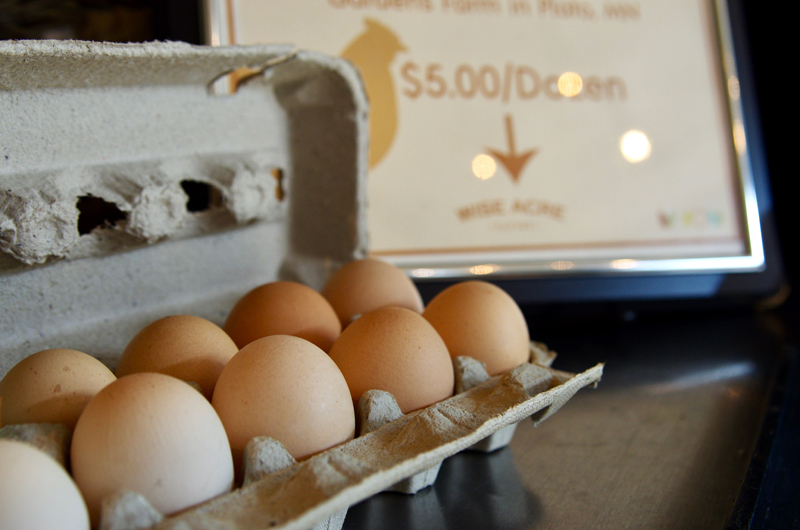 It would be optimistic to assume the pivot is turning revenue around completely. While the eatery is still sustaining losses, the addition of retail offerings has allowed them to re-route their supply of farm-produced goods—bypassing the kitchen and dining room and their associated costs—and in some cases to sell more product with the same or better margins. However, the team acknowledges that the ability to make this shift at all is a privilege. “I almost feel a moral obligation [to not rely on carryout and patio service], because we know how hard it’s going to be for those that don’t have options to keep their restaurants afloat,” says Dean Engelmann, the restaurant’s co-owner and “farmer-in-chief.”
It would be optimistic to assume the pivot is turning revenue around completely. While the eatery is still sustaining losses, the addition of retail offerings has allowed them to re-route their supply of farm-produced goods—bypassing the kitchen and dining room and their associated costs—and in some cases to sell more product with the same or better margins. However, the team acknowledges that the ability to make this shift at all is a privilege. “I almost feel a moral obligation [to not rely on carryout and patio service], because we know how hard it’s going to be for those that don’t have options to keep their restaurants afloat,” says Dean Engelmann, the restaurant’s co-owner and “farmer-in-chief.”
Engelmann and Layer hope that, given the bleak outlook for foodservice operations across the board, their decision to sell more product and limited finished items will allow other restaurants in the community to continue to profit from their customary offerings. “[We have to] look at the other avenues and options to get out of the way so that those that don’t have options have a better chance of success and survival,” says Engelmann.
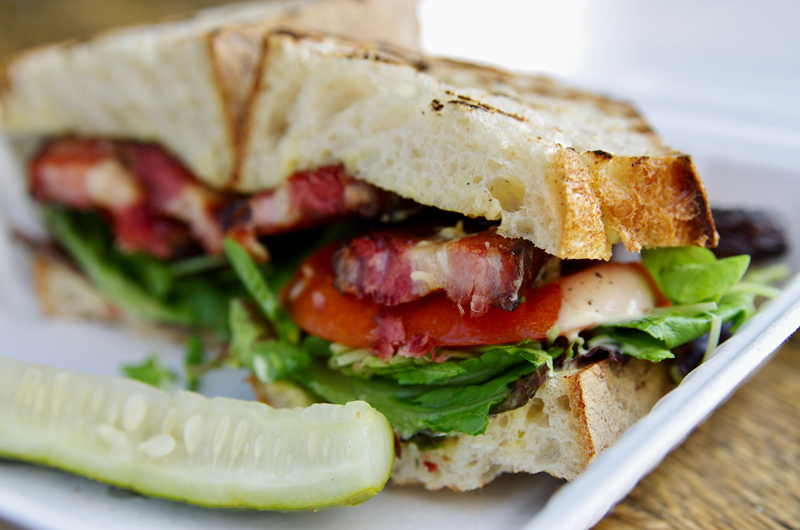 In a poetic sense, Wise Acre’s COVID-19 response is bringing the operation full circle. “Our entry into the food world started by creating a little mini market inside of Tangletown Gardens…so in a way we’re going back to our very roots of farming,” laughs Engelmann. This tracks with a general shift many people have been experiencing as quarantine continues: whether we wanted it this way or not, lockdown has transported us back to simpler times in many regards.
In a poetic sense, Wise Acre’s COVID-19 response is bringing the operation full circle. “Our entry into the food world started by creating a little mini market inside of Tangletown Gardens…so in a way we’re going back to our very roots of farming,” laughs Engelmann. This tracks with a general shift many people have been experiencing as quarantine continues: whether we wanted it this way or not, lockdown has transported us back to simpler times in many regards.
Engelmann hopes some of the silver linings of this “new normal” might have staying power. “I hope that the good that comes out of COVID is that it’s maybe made us as individuals have a deeper respect—and a deeper meaning—for some of the things that we took for granted. And that’s, you know, good food, where food comes from, and the local economies that supply it.”

